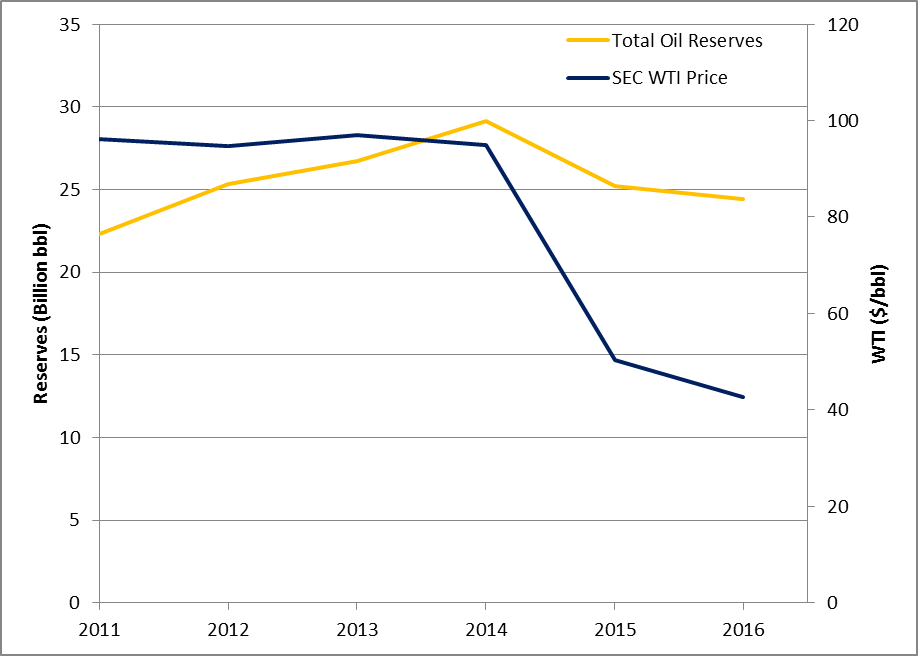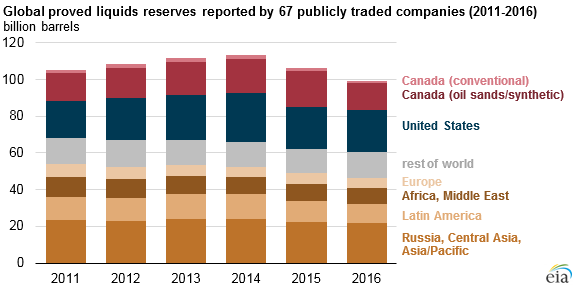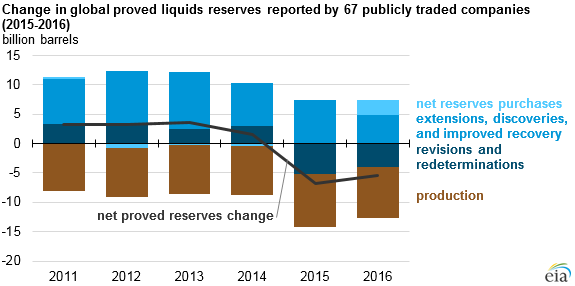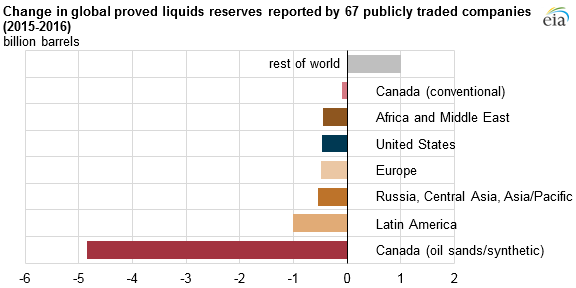U.S. independents reported combined 790 MMBBL decrease; Canada’s oil sands drug down the total
Independent E&P companies saw liquids reserves decline again in 2016, as lower prices continued to squeeze producers.
Oil prices in early 2016 dropped to the lowest levels in more than a decade. While OPEC’s output cut did improve the price environment late in the year, it was not enough to raise the overall SEC price for 2016. Based on the previous year’s monthly spot price, the WTI price used for reserves calculation in 2016 was $42.75, the lowest in more than a decade.
This lower price forced liquids reserves down among independent U.S. E&Ps. However, this is primarily due to large downward revisions on ConocoPhillips oil sands properties. If ConocoPhillips is not included, U.S. E&Ps’ liquids reserves actually increased in 2016 despite the lower prices.
EnerCom Analytics tracked 77 independent U.S. in 2016, with a combined 24.4 billion barrels in liquids reserves. These reserves decreased by about 790 million barrels from total reserves in 2015. While a large volume, this is far less than the 3.9 billion barrel decrease seen in 2015.

49% of companies tracked saw liquids reserves increase in 2016
The hostile price environment did not deter some companies, and just under half of the companies tracked by EnerCom Analytics saw liquids reserves increase in 2016. Chief among those that saw increases was Antero Resources (ticker: AR). Antero’s improved NGL capabilities meant the company’s liquids reserves grew by more than 60% in 2016, giving it the 6th-largest liquids reserves among U.S. independents.
|
Top 10 Independent E&Ps by Liquids Reserves (2016) |
||||
| Rank | Ticker | Change in Rank | 2016 Reserves (MMBBL) | Change in Reserves (MMBBL) |
| 1 | COP | – | 3,887.00 | -1,427.00 |
| 2 | OXY | 1 | 1,777.00 | 138.00 |
| 3 | MRO | -1 | 1,688.00 | -65.00 |
| 4 | EOG | – | 1,593.95 | 113.48 |
| 5 | DVN | – | 1,120.00 | -92.00 |
| 6 | AR | 5 | 995.00 | 382.00 |
| 7 | APC | -1 | 985.00 | -68.00 |
| 8 | APA | -1 | 834.73 | -157.27 |
| 9 | HES | -1 | 826.00 | -1.00 |
| 10 | RRC | 2 | 700.32 | 97.99 |
| Total | 14,407.00 | -1,078.80 | ||
In general, companies are becoming adapted to operating in the lower price environment, and have become more capable of operating efficiently. If prices do not enter another significant downward spiral, it seems likely that companies reserves will begin to increase again as activity increases.
Canadian oil sands reserves down nearly 5 billion barrels
The EIA reached similar conclusions in a recent note examining oil companies proved liquids reserves.
The EIA examines the annual reports of 67 publicly traded oil companies for changes in reserves. These companies include some of the world’s largest, including the supermajors and several NOCs. The 67 companies the EIA tracks have substantial operations throughout the world. The EIA identifies the location of reserves where available, allowing changes in individual regions to be examined.

In total, these companies reported a total decline in liquids reserves of 5.4 billion barrels last year. This marks the second year the companies tracked by the EIA have reported a combined decline in reserves. The decline pushed the total companies’ reserves below 100 billion barrels for the first time since at least 2011.

The 5.4 billion decrease in reserves was in large part concentrated in a few companies that have operations in the Canadian oil sands. Investment in oil sands activity has declined sharply in recent years, from $34 billion in 2014 to a predicted $15 billion in 2017. In total, reserves from Canadian oil sands projects declined by nearly 5 billion barrels, far outpacing changes in other regions. In the U.S., by contrast, total reserves among the companies tracked by the EIA declined by only about 500 million barrels.



